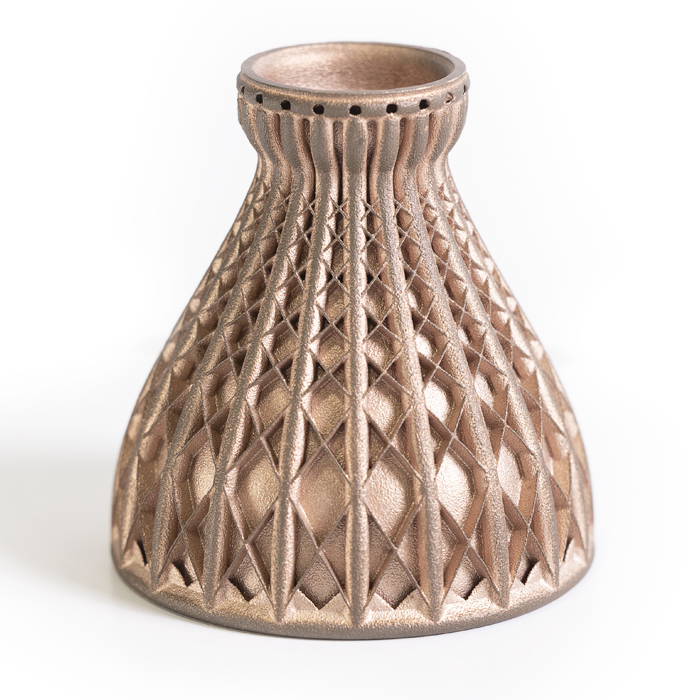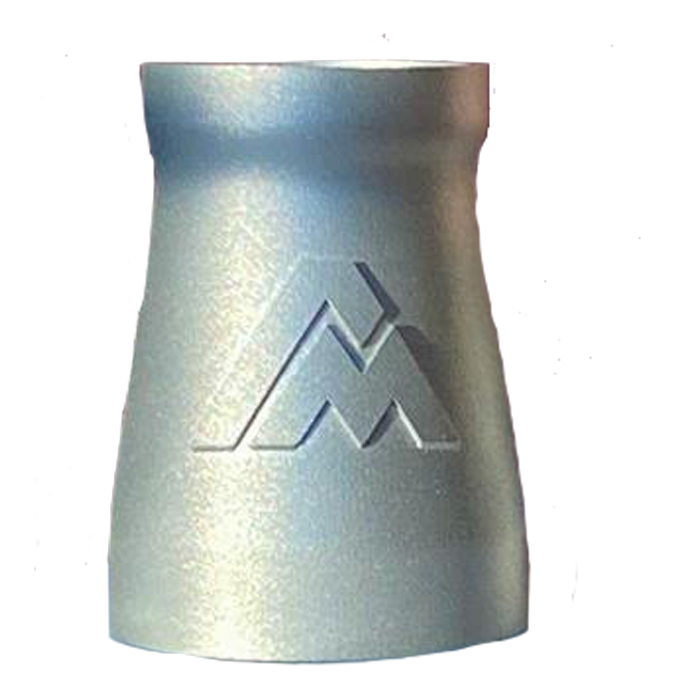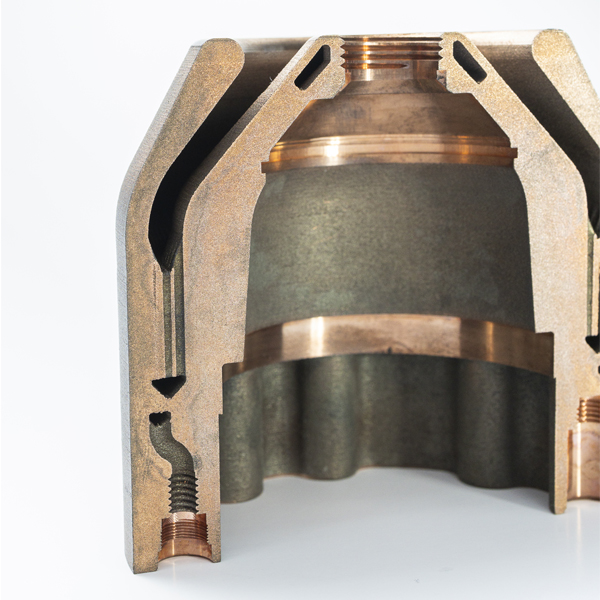From electrical systems to aerospace and industrial machinery, copper alloys provide superior thermal and electrical conductivity, exceptional durability, and excellent corrosion resistance for demanding applications.

Below is an overview of the copper alloys available and their unique advantages:
A versatile copper alloy known for its corrosion resistance, machinability, and aesthetic appeal.
- Ideal Applications: Plumbing, decorative fixtures, precision components, and musical instruments.
- Unique Characteristics: Good strength, excellent workability, and antimicrobial properties.
A strong, wear-resistant alloy used in industrial and marine applications.
- Ideal Applications: Bearings, gears, marine hardware, and sculpture.
- Unique Characteristics: High corrosion resistance, low friction, and superior durability.
Lightweight and strong with excellent thermal and electrical conductivity.
- Ideal Applications: Nuclear reactor components, furnace parts, and electronics.
- Unique Characteristics: High creep resistance and compatibility with high-temperature coatings.
A high-performance copper alloy with superior strength, hardness, and thermal conductivity.
- Ideal Applications: Aerospace components, precision instruments, electrical connectors, and non-sparking tools.
- Unique Characteristics: Non-magnetic, non-sparking, and highly resistant to fatigue and wear.
Exceptional resistance to seawater corrosion and biofouling, making them ideal for marine and chemical applications.
- Ideal Applications: Shipbuilding, desalination plants, and offshore structures.
- Unique Characteristics: Excellent corrosion resistance in marine environments and antimicrobial properties.
High-strength copper alloy with excellent resistance to wear, corrosion, and oxidation.
- Ideal Applications: Aerospace components, heavy machinery, and marine propulsion systems.
- Unique Characteristics: Exceptional wear resistance, high strength, and non-sparking properties.

Copper alloys are some of the most electrically and thermally conductive materials available, making them indispensable in industries that require efficient energy transfer and heat dissipation. Their high conductivity ensures minimal energy loss, improved system efficiency, and enhanced performance in demanding applications.
- Why It Matters: Ensures superior electrical and thermal efficiency, reducing overheating and power loss.
- Applications: Electrical wiring, circuit boards, busbars, heat exchangers, and cooling systems.
- Example: Beryllium copper (BeCu) is used in aerospace electrical connectors due to its high conductivity and strength, while CuNi alloys are used in heat exchangers for their ability to handle extreme temperature fluctuations.
Copper alloys naturally resist oxidation and corrosion, especially in marine, chemical, and industrial environmentswhere exposure to moisture, saltwater, and chemicals is common. Their durability extends component lifespan, reducing maintenance and replacement costs.
- Why It Matters: Critical for applications exposed to harsh environments, where material degradation could lead to system failures.
- Applications: Marine hardware, chemical processing equipment, offshore oil rigs, and HVAC systems.
- Example: Copper-nickel (CuNi) alloys are widely used in ship hulls, offshore piping, and desalination plants due to their resistance to biofouling and seawater corrosion.
Copper alloys maintain excellent mechanical properties over time, resisting deformation, fatigue, and mechanical stress, even in extreme conditions. Some alloys, such as beryllium copper, offer tensile strengths comparable to steel, making them ideal for applications requiring both conductivity and durability.
- Why It Matters: Enhances the longevity of components in high-load and high-wear environments.
- Applications: Bearings, bushings, aerospace components, and high-performance industrial machinery.
- Example: Aluminum bronze is used in heavy machinery and aerospace due to its superior wear resistance and high strength, outperforming traditional bronze and brass.
Certain copper alloys, such as beryllium copper and aluminum bronze, are non-sparking, making them ideal for explosive or flammable environments where safety is critical. Additionally, copper alloys can be non-magnetic, making them useful in applications where magnetic interference must be avoided.
- Why It Matters: Ensures operational safety in hazardous environments, preventing accidental ignitions or electromagnetic interference.
- Applications: Oil and gas refineries, aerospace electrical systems, MRI-compatible medical tools, and non-magnetic fasteners for sensitive electronic equipment.
- Example: Beryllium copper tools are used in oil rigs, mines, and aerospace maintenance facilities where sparks could ignite flammable gases.
Copper alloys are highly formable, weldable, and machinable, allowing manufacturers to create complex geometries and custom components without sacrificing strength or durability. These properties make them ideal for intricate designs and high-precision manufacturing.
- Why It Matters: Enables cost-effective production and rapid prototyping of custom components.
- Applications: Aerospace fasteners, precision medical devices, architectural elements, and industrial tooling.
- Example: Brass (copper-zinc alloy) is widely used in decorative metalwork and plumbing components due to its ease of machining and polishability, while phosphor bronze is commonly used in musical instruments for its smooth workability and corrosion resistance.
Copper alloys play a critical role in thermal management, structural reinforcement, and wear resistance within the aerospace industry. Their high thermal conductivity and corrosion resistance make them indispensable for aircraft and spacecraft components operating in extreme environments.
- Heat Exchangers and Cooling Systems: Copper alloys dissipate heat efficiently, preventing overheating in avionics, propulsion systems, and hydraulic components.
- Structural and Wear-Resistant Components: Aerospace-grade copper alloys provide high strength and fatigue resistance, ensuring durability in landing gear bushings, bearings, and aerospace fasteners.
- Wiring and Busbars: High-conductivity beryllium copper is used in aircraft electrical systems to ensure efficient energy transmission with minimal weight.
- Example: Beryllium copper and CuNi alloys are widely used in space applications where radiation resistance and thermal stability are critical.
Copper alloys enhance the performance, efficiency, and safety of modern vehicles, especially in electric and hybrid vehicles that demand superior thermal and electrical management.
- High-Conductivity Terminals and Wiring Harnesses: Copper-based conductors ensure efficient power distribution in EVs, hybrid vehicles, and autonomous systems.
- Heat Sinks and Cooling System Components: Copper alloys regulate battery temperatures, dissipate heat from high-performance engines, and optimize electric motor cooling.
- Example: Copper-alloy battery busbars in EVs provide low-resistance power transmission, maximizing energy efficiency.
Copper alloys offer high strength, wear resistance, and non-sparking properties, making them essential for hazardous environments and heavy-duty machinery.
- Non-Sparking Tools for Hazardous Environments: Beryllium copper (BeCu) and aluminum bronze are used in oil refineries, mines, and chemical plants, preventing sparks that could ignite flammable gases.
- Bearings and Bushings for Heavy Machinery: Phosphor bronze and aluminum bronze ensure low-friction operation and high-load capacity, extending the life of industrial equipment.
- Example: Aluminum bronze gears in mining equipment withstand extreme pressure and abrasive conditionswhile resisting wear.
Copper alloys are revolutionizing the medical industry by offering antimicrobial properties, biocompatibility, and non-magnetic characteristics for advanced healthcare applications.
- Antimicrobial Surfaces in Hospital Equipment: Copper’s natural antimicrobial properties help prevent bacterial growth on hospital touch surfaces, surgical tools, and high-touch areas like IV poles and bed rails.
- MRI-Compatible Components: Non-magnetic beryllium copper is used in MRI-safe surgical instruments, hospital equipment, and imaging components, ensuring patient safety while maintaining structural integrity.
- Example: Copper-infused antimicrobial coatings in hospitals reduce the spread of infections, improving patient safety.
With superior electrical conductivity, corrosion resistance, and electromagnetic shielding properties, copper alloys are fundamental to modern electronics.
- High-Performance Electrical Connectors and Wiring: Copper alloys such as beryllium copper and phosphor bronze ensure high signal integrity, excellent fatigue resistance, and corrosion protection in mission-critical electronics.
- Circuit Boards and Electromagnetic Shielding: Copper alloys form the backbone of printed circuit boards (PCBs), ensuring fast data transmission, minimal resistance, and reduced electromagnetic interference (EMI)in high-performance computing, telecommunications, and aerospace electronics.
- Example: Beryllium copper connectors are used in aerospace communication systems to withstand extreme temperatures and vibrations.
